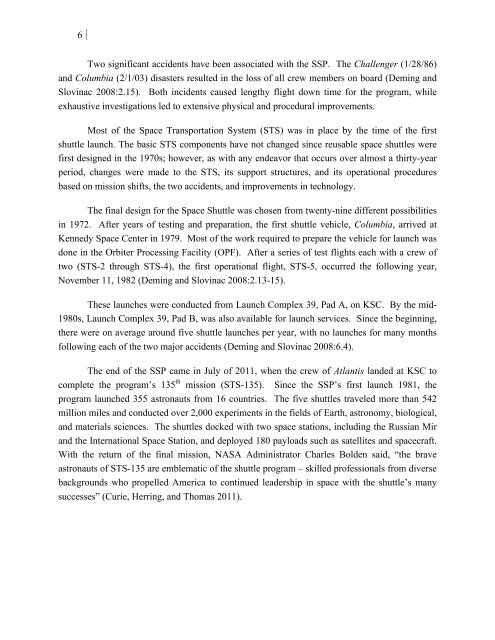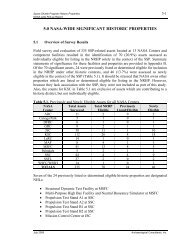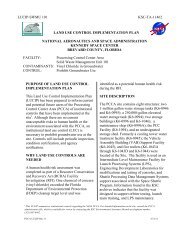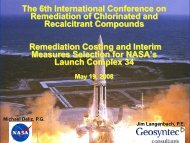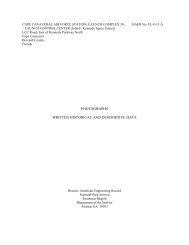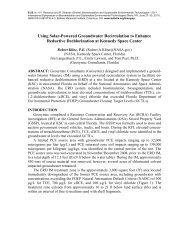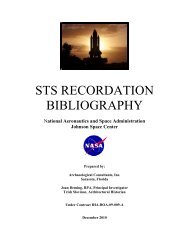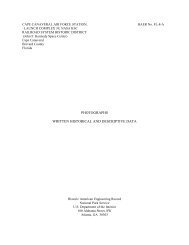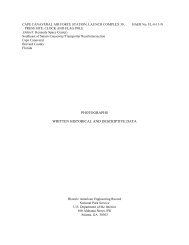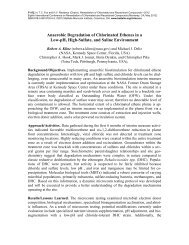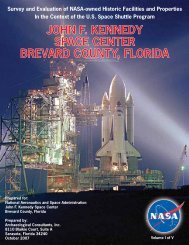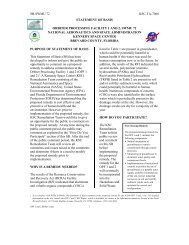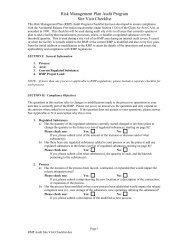HMP South & Boresight Control Building Historic Survey
HMP South & Boresight Control Building Historic Survey
HMP South & Boresight Control Building Historic Survey
Create successful ePaper yourself
Turn your PDF publications into a flip-book with our unique Google optimized e-Paper software.
6Two significant accidents have been associated with the SSP. The Challenger (1/28/86)and Columbia (2/1/03) disasters resulted in the loss of all crew members on board (Deming andSlovinac 2008:2.15). Both incidents caused lengthy flight down time for the program, whileexhaustive investigations led to extensive physical and procedural improvements.Most of the Space Transportation System (STS) was in place by the time of the firstshuttle launch. The basic STS components have not changed since reusable space shuttles werefirst designed in the 1970s; however, as with any endeavor that occurs over almost a thirty-yearperiod, changes were made to the STS, its support structures, and its operational proceduresbased on mission shifts, the two accidents, and improvements in technology.The final design for the Space Shuttle was chosen from twenty-nine different possibilitiesin 1972. After years of testing and preparation, the first shuttle vehicle, Columbia, arrived atKennedy Space Center in 1979. Most of the work required to prepare the vehicle for launch wasdone in the Orbiter Processing Facility (OPF). After a series of test flights each with a crew oftwo (STS-2 through STS-4), the first operational flight, STS-5, occurred the following year,November 11, 1982 (Deming and Slovinac 2008:2.13-15).These launches were conducted from Launch Complex 39, Pad A, on KSC. By the mid-1980s, Launch Complex 39, Pad B, was also available for launch services. Since the beginning,there were on average around five shuttle launches per year, with no launches for many monthsfollowing each of the two major accidents (Deming and Slovinac 2008:6.4).The end of the SSP came in July of 2011, when the crew of Atlantis landed at KSC tocomplete the program’s 135 th mission (STS-135). Since the SSP’s first launch 1981, theprogram launched 355 astronauts from 16 countries. The five shuttles traveled more than 542million miles and conducted over 2,000 experiments in the fields of Earth, astronomy, biological,and materials sciences. The shuttles docked with two space stations, including the Russian Mirand the International Space Station, and deployed 180 payloads such as satellites and spacecraft.With the return of the final mission, NASA Administrator Charles Bolden said, “the braveastronauts of STS-135 are emblematic of the shuttle program – skilled professionals from diversebackgrounds who propelled America to continued leadership in space with the shuttle’s manysuccesses” (Curie, Herring, and Thomas 2011).


